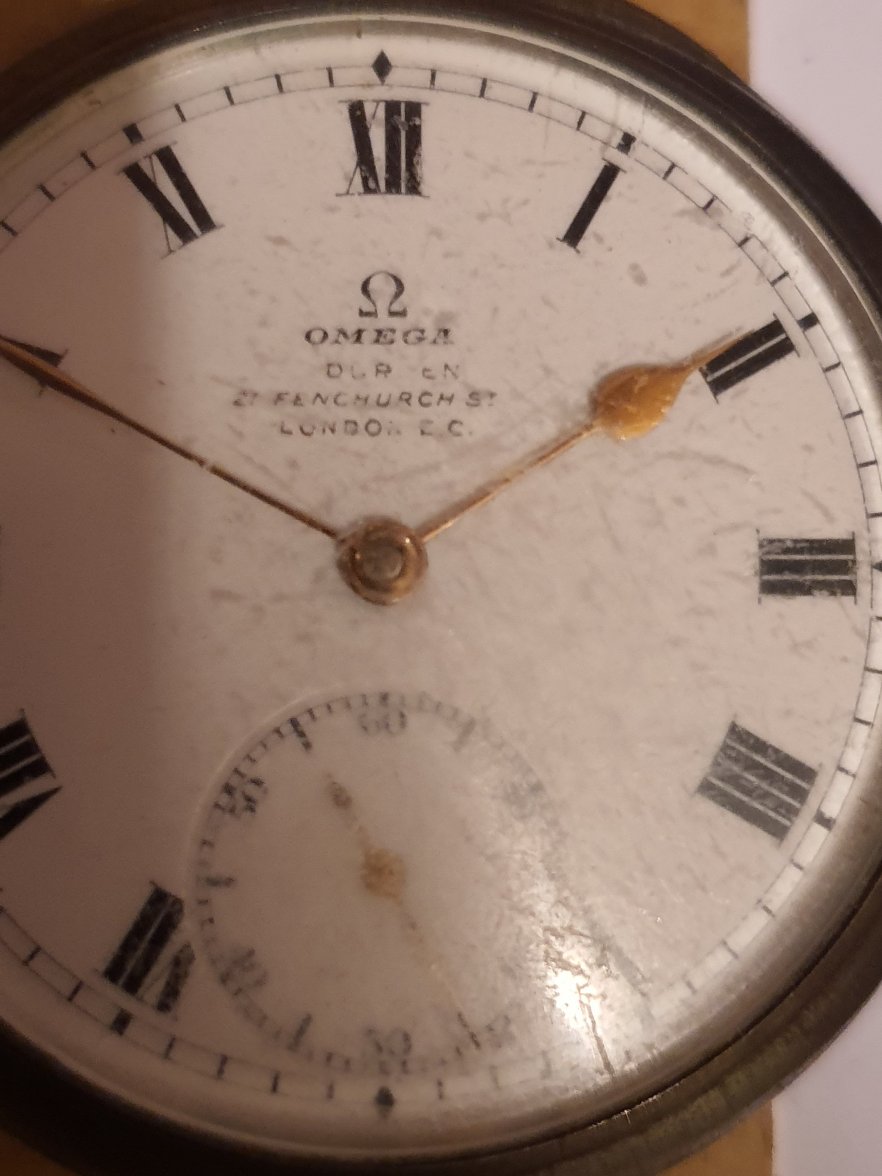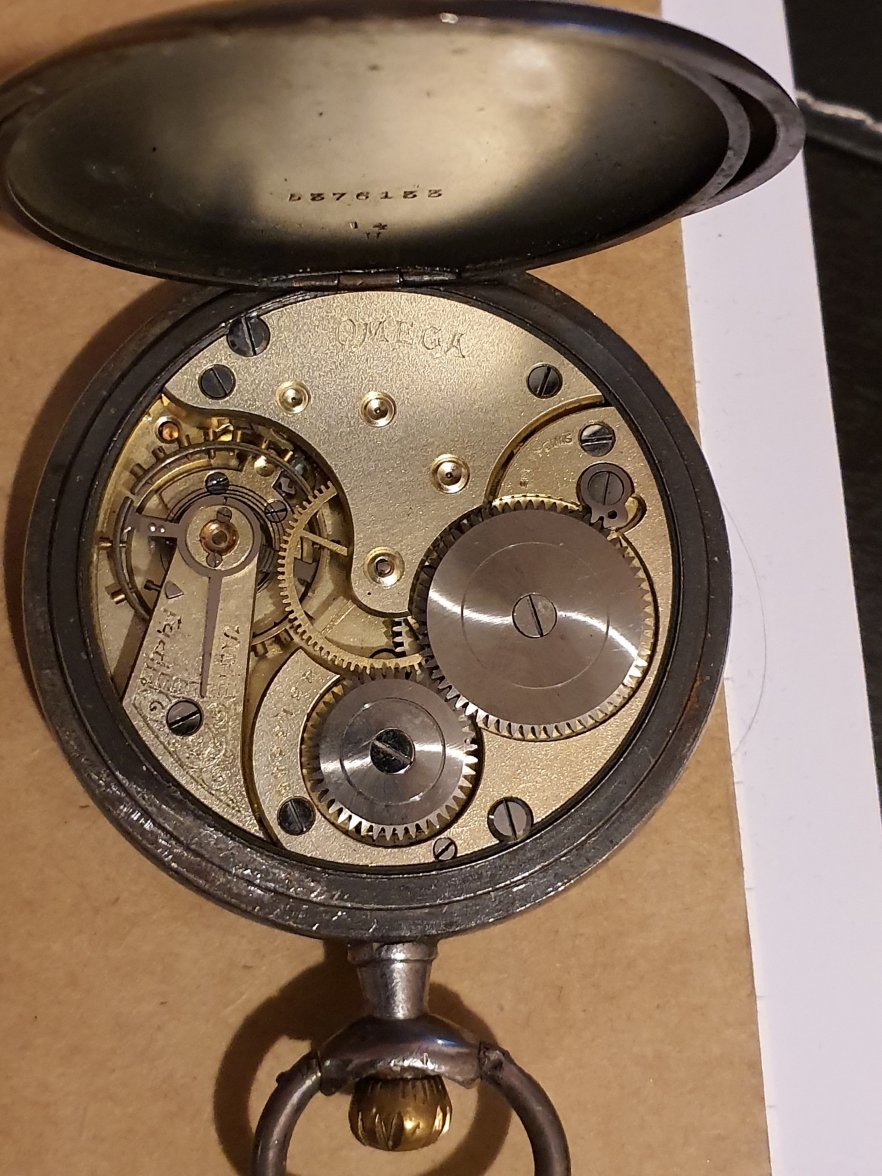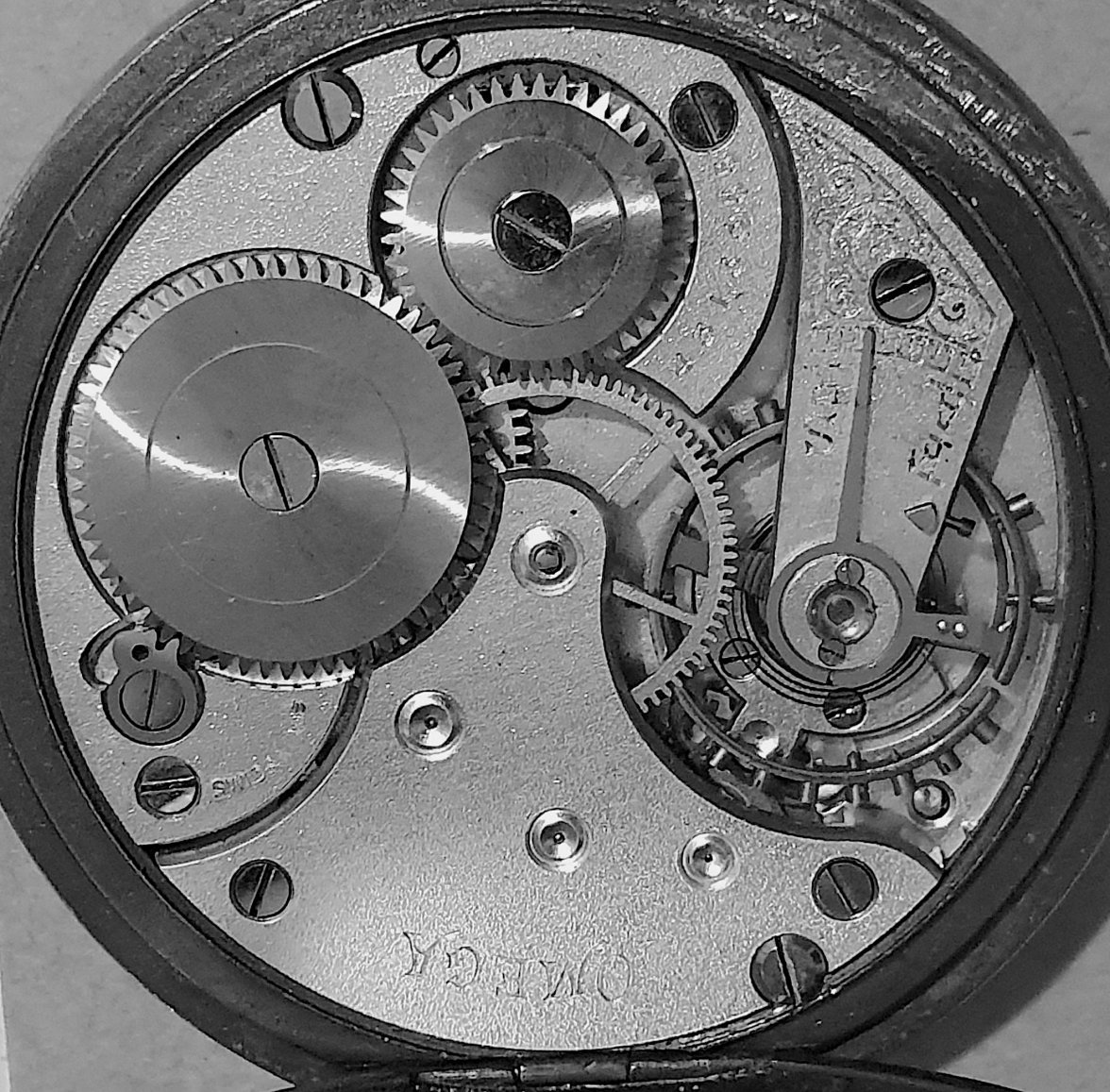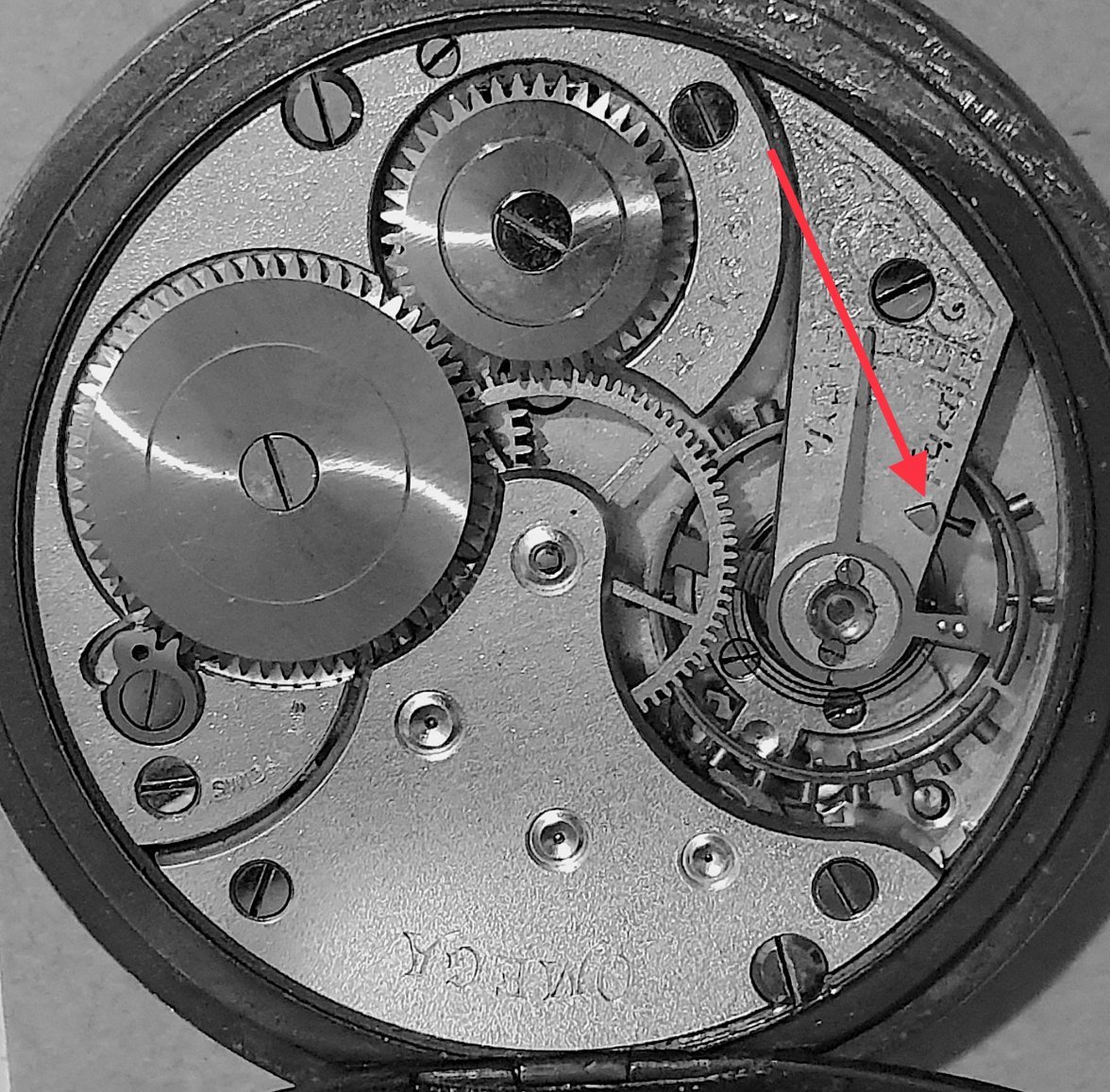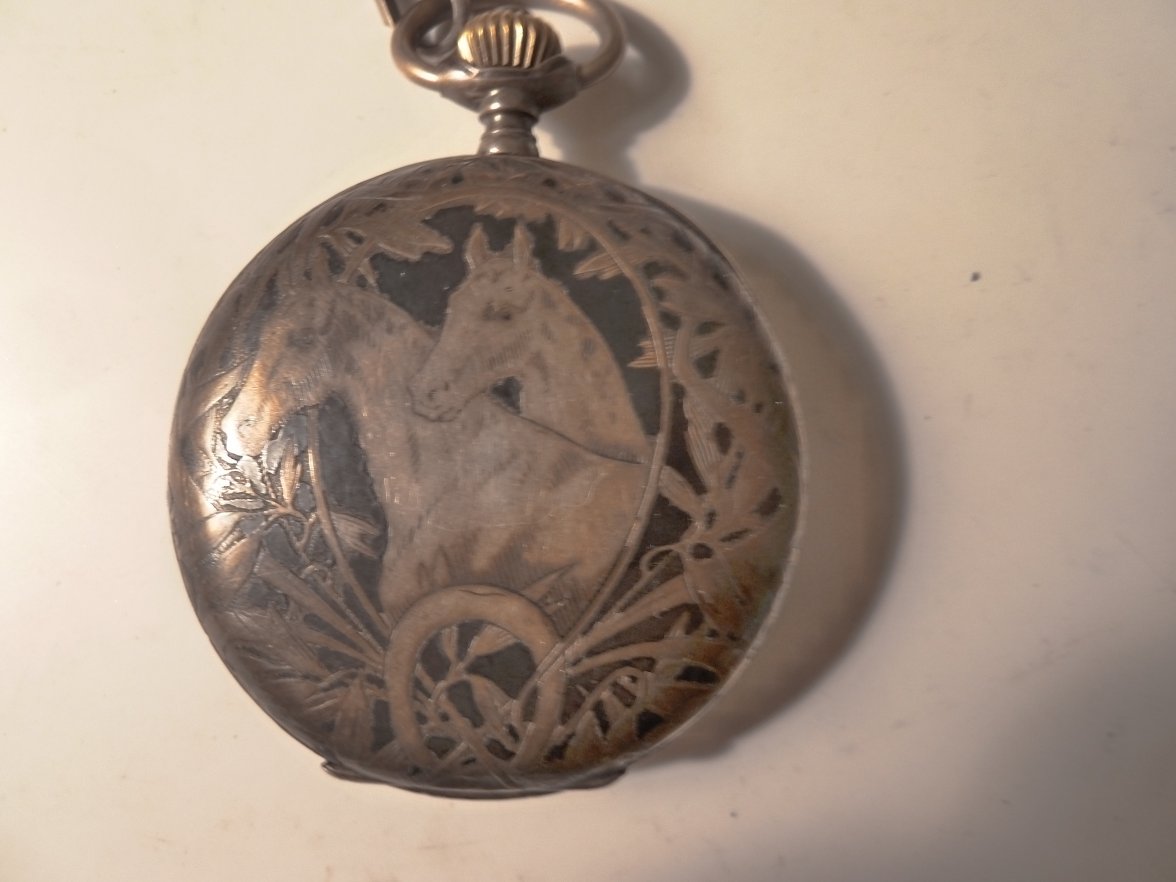OMG04
·Having just recently, finally, acquiring my first Omega wristwatch I remembered I had found a pocket watch a few years ago (probably on the bay or a boot sale) that is marked as Omega on the dial and movement but not working I'm afraid (I've just remembered I also have a not working tuning fork wristwatch too) 🙄.
I was (still am) unsure of if it was actually as marked seeing as it was just a plain steel finish case and yet quite old it would seem.
Any thoughts on this item, age, if genuine, and value even?
Apologies if the pics don't work.
Steve
I was (still am) unsure of if it was actually as marked seeing as it was just a plain steel finish case and yet quite old it would seem.
Any thoughts on this item, age, if genuine, and value even?
Apologies if the pics don't work.
Steve
